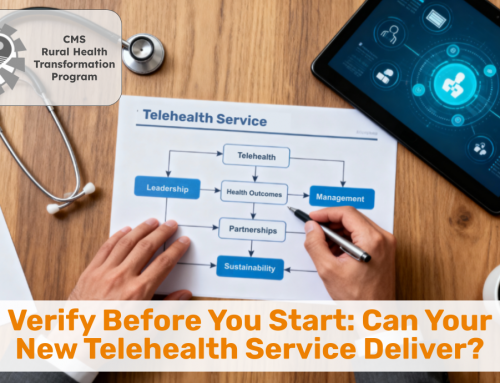In the world of digital health innovation, it is not sufficient to just have a great solution that works. It is equally important to ensure that the solution is actually used and that it is used as intended, so that it can create the value it was designed for.
That gap between a solution’s great potential and the actual implementation is these days one of healthcare’s greatest tragedies.
As I’ve laid out over a series of four articles, accelerating the adoption of digital health innovation must be one of the leadership team’s highest priorities.
To solve their most urgent, costly, and pervasive problems, organizations must learn to quickly validate innovative solutions. They must move swiftly from idea to validation, before starting the implementation.
To prepare for a successful implementation, the team must focus on Change Management Planning, Workflow Design, Operationalization, and running a Proof of Concept, as I described in the first part of Digital Health Solution Implementation.
Once the solution has been validated (through the Proof of Concept), it’s time to focus on Implementation Project Management, User Training, Performance Management, and — most importantly — Implementation Leadership.
Implementation Project Management
Project Management is the art and science of creating and executing a plan to achieve a desired outcome. It involves a multitude of different aspects including schedule, cost, stakeholders, communication, procurement, quality, and risk. As a former certified project manager (PMP) I know first hand that plenty of tomes have been written about project management, so here are just a few pointers specifically on the project management of a digital health solution implementation.
Schedule Management: one of the primary responsibilities of project management, the development and management of a schedule is key for communication across all stakeholders and to identify (in the work breakdown structure, WBS) any dependencies between tasks.
Cost and Resource Management: While cost during the implementation may not be of much concern (as it will be at this point quite predictable), the management of resources is key, because it often takes a village to fully integrate a digital solution into the existing structure, workflows, and technology.
Stakeholder Management: As outlined in the change management planning, it is crucial to engage anyone who can have an impact on the success of the implementation. Stakeholders includes the users (e.g., clinicians, nurses, patients), management & leadership, as well as any operational, financial, or technical support staff. It is important to identify all stakeholders and to satisfy the information needs of each different stakeholder type.
Procurement Management: While the solution has oftentimes already been secured, other technologies or services may be needed to fully enable the digital health solution’s premises. Managing solution and service vendors proactively is key to success.
Quality Management: the quality of the implementation will be measured by the actual utilization and performance of the solution, which we’ll address in more detail in the next section.
Risk Management: Last but certainly not least, it is important to identify and analyze all risks: factors that can have a negative impact on the success of the implementation. Studying each risk’s probability and impact and developing contingency plans for the most severe risks oftentimes only takes a couple of hours, but can save weeks of stress.
User Training
Healthcare is a complex system of service workflows, and as such much training is needed at various levels of the organization including providers, nurses, support staff, billing, IT, marketing, and leadership. Most digital health innovations insert themselves into the diagnosis or treatment of a patient, or even serve as preventive measures, requiring the support of all of the aforementioned groups.
The best way to approach training is actually through the lens of the ADKAR® change management model: Awareness, Desire, Knowledge, Ability, and Reinforcement.
The first level of training focuses on raising Awareness about the importance of the solution and, by describing the solution’s benefits, ideally creating a Desire by all to support the success of the solution’s implementation.
Since most solutions will indirectly affect patient care, it is important to explicitly highlight the solutions’ clinical benefits to ensure the clinicians’ buy-in. Furthermore highlighting the strategic and financial benefits will provide additional motivation to all to make this implementation a resounding success.
The next level of training is designed to provide each user of the solution (or supportive roles) with the necessary Knowledge on how to use or support the innovative solution. This mostly includes training on the workflows and on the technology itself. Through hands-on training, this also improves the users Ability to use (or support) the solution as intended.
The final element of the ADKAR® model is Reinforcement, which we’ll address in more detail in the next section.



Monitoring and Managing Performance
Far too often, digital health solutions have been purchased and installed, but have rarely been used, or only been used by a few enthusiasts, thus robbing the organization of the tangible and intangible benefits that the investment in the solution was intended to create.
The real tragedy is that this not only renders the investment a loss, but it also robs clinicians and patients of the solution’s intended benefits, merely because utilization was never at the level where it was expected to be.
To prevent this from happening, all of the above steps (change management, workflow design, proof-of-concept validation, user training, etc.) will greatly enhance the chance for success. Alas, the last element of the ADKAR® model, Reinforcement, is absolutely critical, because it is human nature to go back to the old ways if something new is (at the beginning) harder than the comfortable old habits. Without reinforcement, there will be backsliding, leading to the aforementioned tragedies.
To prevent this from happening, it is thus crucial to establish and launch a performance monitoring and management system right away, to ensure that the organization’s investment in the solution (and its implementation) will create the value as intended.
To identify the most relevant metrics, the best starting point are the metrics identified as part of the Proof-of-Concept to validate the assumptions. Here are a few common performance indicators to consider:
- clinician satisfaction, patient satisfaction, staff satisfaction
- utilization of the solution
- filed complaints or issues
- outcomes/value verification
- financial sustainability assessment
Many of those metrics can also be directly derived from the Strategic, Business, and Clinical Case developed during the prioritization and selection of the solution.
To implement the performance monitoring and management system, the next step is to identify the individuals responsible for collecting, analyzing, and reporting the various metrics, along with the leadership representatives responsible for taking corrective action, should the metric not be in line with the expectations. For more information on performance management, see this article on measuring telehealth success.
Leading Successful Implementations
The single most ingredient to implementation success is not the credentials of the project manager nor the brilliance or novelty of the innovation. The most important factor for implementation success is the visible engagement and support of the clinical and executive leader. Successful, lasting change only occurs with strong buy-in and support from the top.
The leaders’ strong commitment to the innovation and a willingness to engage and remove the inevitable obstacles is key for reaping the benefits promised by the solution vendors’ sales people. Otherwise all you are left with is “unrealized potential”.
As a leader committed to accelerating the adoption of digital health innovation, you should require that these proven best practices are followed when implementing your next innovative digital health solution:
- Clinical & Executive Leadership Support
- Proactive Change Management
- Workflow Design
- Operationalization Design
- Assumption Validation through Proof-of-Concept
- Thorough Implementation Project Management
- Comprehensive User Training
- Performance Monitoring and Management
Healthcare and patients have too much to lose if you don’t.
The successful adoption of digital health requires the engagement of clinicians, a focus on workflow over technology, and one additional mindset shift. Find out more in the next article of this series: Innovation in Healthcare: Clinician Engagement for Digital Health Adoption.








To receive articles like these in your Inbox every week, you can subscribe to Christian’s Telehealth Tuesday Newsletter.
Christian Milaster and his team optimize Telehealth Services for health systems and physician practices. Christian is the Founder and President of Ingenium Digital Health Advisors where he and his expert consortium partner with healthcare leaders to enable the delivery of extraordinary care.
Contact Christian by phone or text at 657-464-3648, via email, or video chat.






